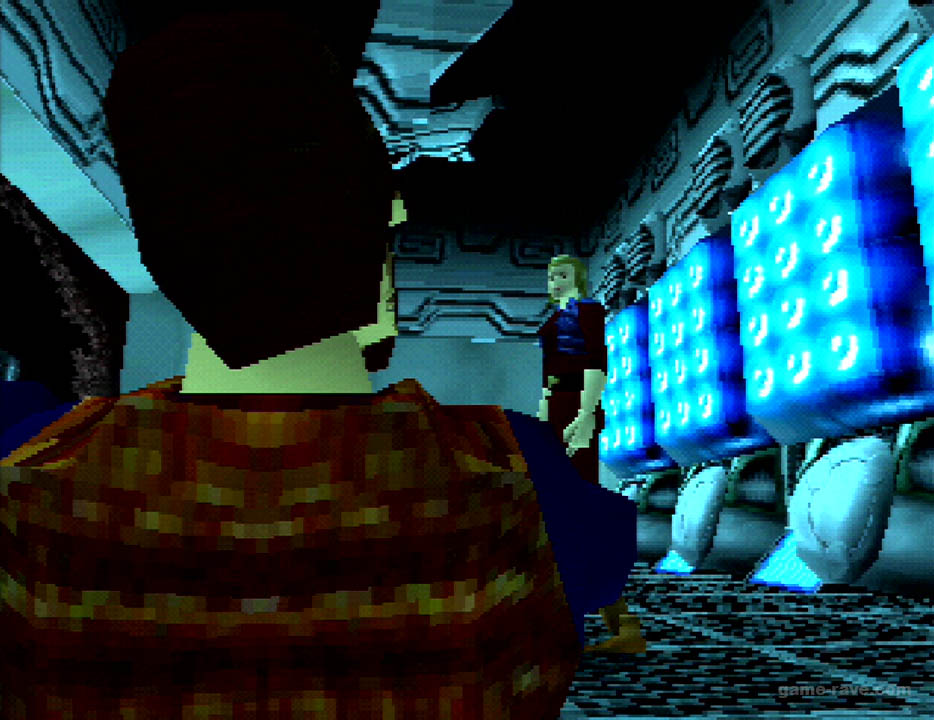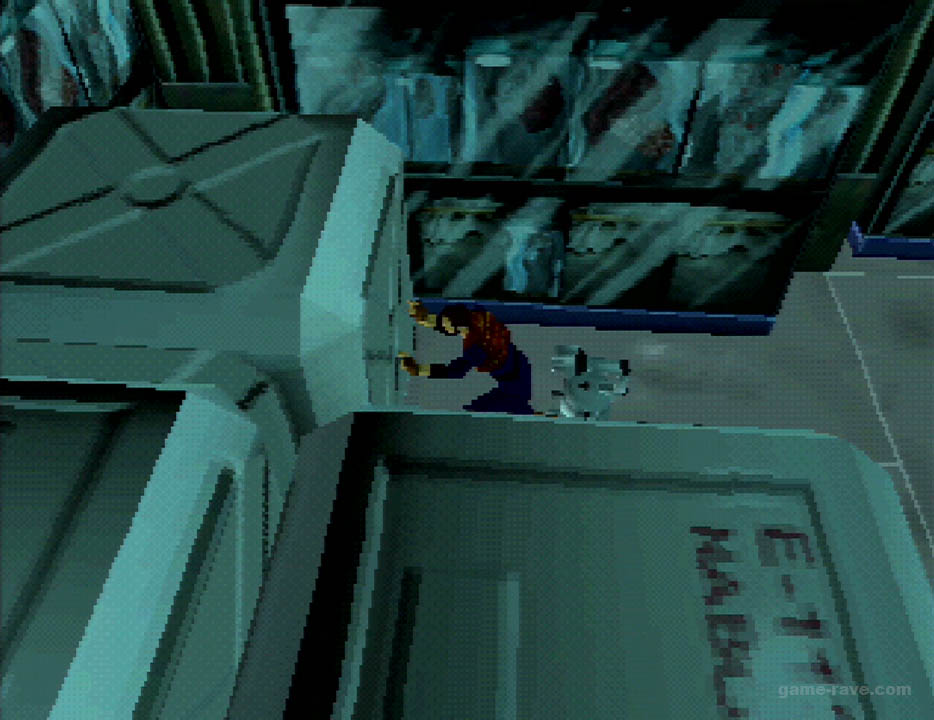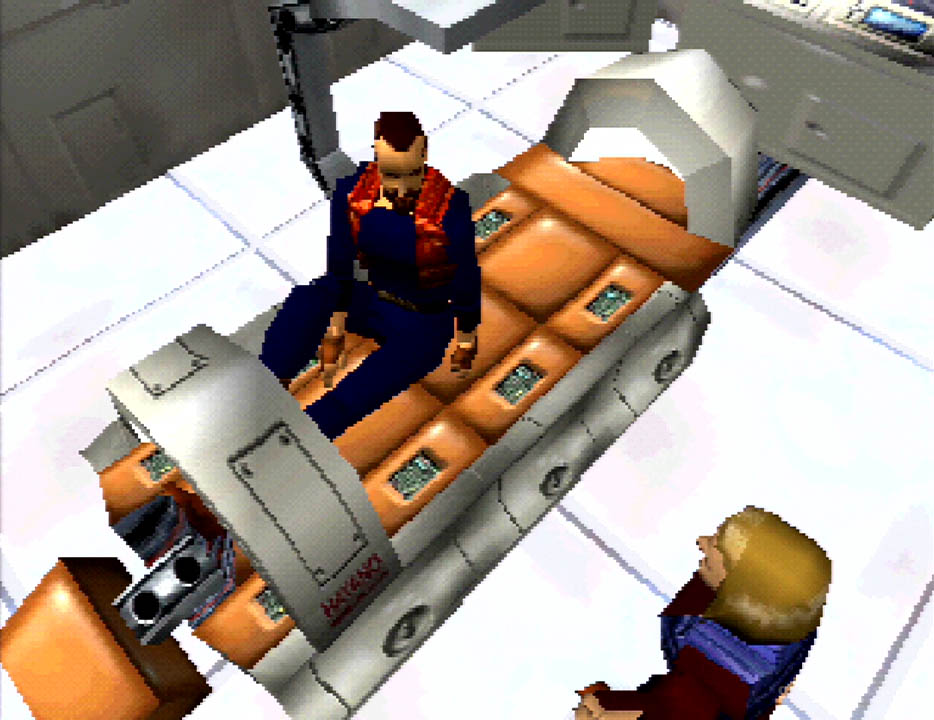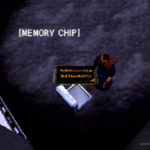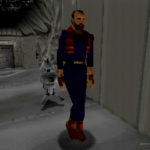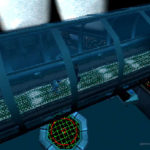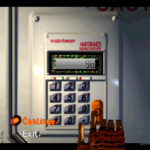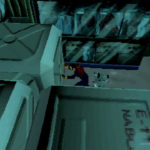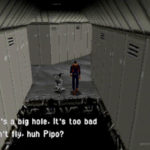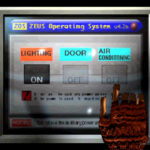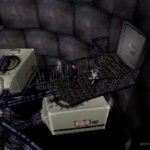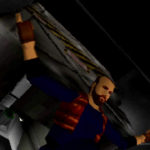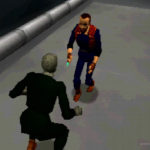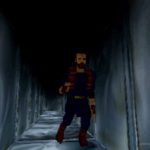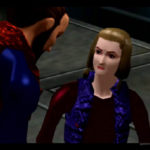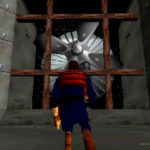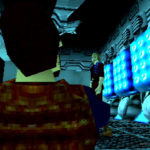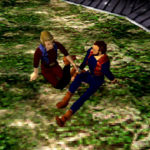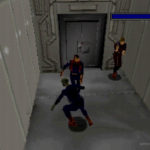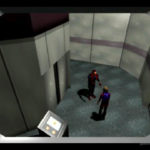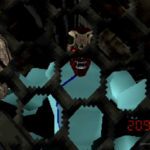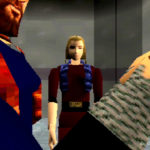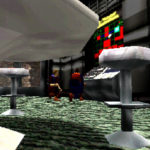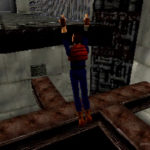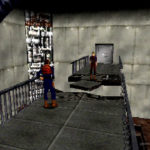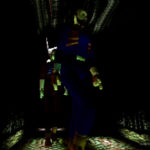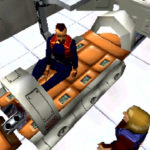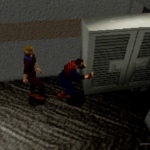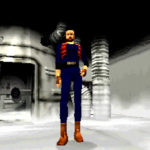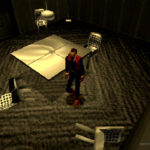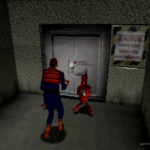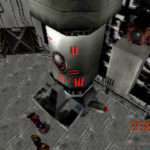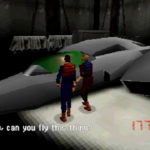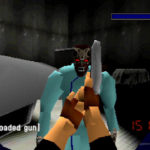| Genre: Survival Horror |
CDs: 1 |
|---|---|
| Publisher: Electronic Arts |
Released: May 22, 1997 |
| Developer: Riverhill Soft |
UPC: 0 14633 07790 2 |
| Sony ID: SLUS-00464 |
PSRM: 006610 |
| Players: 1 Player |
Memory: 4 Blocks |
| Accessories: None |
|
| ESRB: Teen – Animated Violence |
|
| Box Copy:
Evil is in Your Blood You wake up from a cryogenic sleep with no memory. Stumbling through an underground base, you discover that an evil virus courses through your veins. You must find an antidote…and soon. With the help from a friendly robot and a mysterious woman, you must battle infected clones and uncover the secret of the base. Survival is only half the battle – to prevail, you must defeat the mysterious scientist who controls your destiny. Features:
|
|
Variants
- There are no known variants.
Misprints
- There are no known misprints.
Review
Overblood was released in May of 1997 for the American PlayStation. Ported over from the Japanese release of the same name, developer Rverhill Soft’s creation is a wonderfully flawed, yet tragically fun romp.
Fair warning, there will be some unintentional spoilers for the game, but nothing that reveals the major plot points or the ending. Overblood’s main focus surrounds the life of one Raz Karcy, a bearded chap who wakes up in a cryogenic tube unaware of who he is or where he is. The bigger problem being that the room is so cold that he’s literally freezing to death.
This revelation then relinquishes control to the player, and it’s here where Overblood’s 1st layer of charm comes through. No tutorial, no guide, just figure it out and don’t screw up. Oh yeah, and don’t die. As Raz fumbles around the room looking for anything to keep him warm, he’ll stumble across the two most important items in the first half of the game; a microchip and a voice recorder. The latter is what you use to save your progress in game. While the former is used to jump start your first companion, Peepo.
Overblood’s 2nd layer of charm is found in Peepo. The little robot creates a wonderful dynamic between Raz, who doesn’t know who he is, and his new robotic friend who can’t explain anything to him. In terms of game play, Peepo acts as a counter-balance to Raz’s amnesia. While our protagonist understands how to open doors and use levers, computers are mostly off limits to him. His new little buddy can activate terminals, control switch boxes, and enter smaller areas that Raz can’t fit into.
With the two having solved the temperature issue and unlocking the door, the new tag-team begin to explore the apparently abandoned location they’re imprisoned in. There is unexplained destruction found through-out the hallways, with several electrical issues found through-out. As players make their way through the corridors it’s discovered that people who should have been there have died from what looks like an infection.
In attempting to learn more about the supposed virus, Raz comes face to face with another human survivor, Millie. Like Raz, she is unsure about her situation and together they continue his journey. It’s here where Overblood’s puzzle elements go into full effect. Similar to games like Resident Evil, Overblood’s take on the problem / solution sequence is far more grounded in reality. Where Resident Evil would have you find shape-based keys to open a door, here Raz just needs to find the actual tool or item needed. A keycard for door access, a wrench to remove a vent cover, and so on. This helps keep the overall tone of the game grounded in its realistic minimalism.
The real challenge comes in the problem you don’t see; ammunition. At about the midway point, Raz and Millie come across a gun and keycard. This gun takes clips, but the clips are not visibly on screen. Like other games in this genre, you must click on various environmental objects to see if they’re hiding anything. Furthermore, your height matters. If Raz says he sees something, and you don’t actually pick up anything, you’ll need to bend down for him to physically retrieve it. Most of the clips are in bizarre locations, like computer bank terminals and an arboretum’s wall.
These bullet clips play a very important role in how you finish the game. What makes Overblood’s gameplay fun is that there are at most maybe 5 or 6 enemies you will need fight and they can be dealt with fisticuffs. Once you reach the final moments however, you’ll really only be able to go mono y mono with the penultimate opponent. After that, you need to unload every bullet you have into the final rival. And even then, you’ll still need to get creative.
Something that I have always loved about Overblood is the music and atmosphere – or at least the lack of it. The sound team lets the structure’s empty halls and Raz’s loneliness take center ambiance. By keeping the music to a minimum, needed only when a story element is played out, Riverhill lets the player soak in their character’s situation. This bleakness is beautifully balanced by Raz’s interactions with Peepo and later Millie – trading the former’s comedic pairing with the human’s more serious discussion.
The voice acting is wonderfully cheesy mostly due to the script, but there is a shocking revelation in the credits. Frank Welker, the man who has voiced damn near everything and everyone, including Megatron himself, is the voice of Peepo. Peepo doesn’t talk…. he just peeps. Ironically – he’s the most emotional one of the group, go figure.
All that’s left to critique is the game’s controls, which is where things slightly fall apart. Unlike other games in this format, Overblood uses full 3D environments that shift the camera along with it as you move. Raz uses the “tank commands” where Up is forward and down is backward, so trying to traverse certain rooms will create a camera shift that if you compensate for will actually have you travelling backwards.
Visually, for originally coming out in 1996, the game holds up in a simple way. The textures are clean, the rooms are large enough to not keep getting caught on obstacles, and the structure holds up well design wise. Many games in this genre will have ridiculously complex and poorly designed levels from a reality standpoint, but here everything seems plausible.
More concerning are the clipping borders – or specifically, the lack of them. Riverhill made sure that this was about survival, and in doing so provide thin catwalks, destroyed bridges, and improvised platforms that offer no room for error. One missed pixel and Raz plummets to his untimely death. Which brings up a very – nay – extremely important fact about that voice recorder I talked about in the beginning of the episode. Pausing and using it is the absolute only way to save your progress. There are no continues – you either start a new game or load your save. If you spent an hour solving a puzzle and accidentally walk off a girder…. you get to replay that entire hour all over again.
If you just thought, “Oh man, save often” you would be absolutely correct – but there’s a deeper and more important angle here to realize. Like needing Ink Ribbons in Resident Evil, the tape recorder acts as the game’s difficulty. Sure, you could take it and save yourself a lot of grief, but if you don’t take it – you get one health bar to make it out alive…with instant pit deaths around random corners. It makes for a fantastic streaming game, especially if you want to speed run through it; with or without a net.
With this review being based on my 4th and 5th play-through of the game, my average time is about two and a half hours of game time; the catch being that I knew where everything was. Speed runners have been able to finish it in just over an hour, which is incredible considering some of the tasks needed to complete. A first run through will probably rank in the 4 to 5-hour mark, if not slightly less.
24 years after its release, Overblood still holds a special place in my heart. It’s an interesting but flawed study in loneliness and simplicity, focusing more on the experience rather then a true challenge – final boss aside. It’s essentially like buying the DVD of a favorite B-movie. Sure, you can play that triple AAA new game or whatever everyone else is playing. But sometimes you just want to enjoy something by yourself, even if it means your on-screen persona shares the same solitude.
The Good
- Stands the test of time
- Plausible level design and puzzle solutions
- Easily finished in a night.
The Bad
- No continue options.
- Raz’s ‘push’ animation sometimes triggers for no reason
- Unforgiving supply of ammunition.
Final Score: 7 / 10 – Solid
A wonderful but flawed experience that’s enjoyable several times through. OverBlood is proof that not every game has to be a “Triple A” title.
Screenshots
Videos

Trivia
- OverBlood had a sequel in Japan and Europe, but was never released in America.
- The game has no Auto Save function, and the Continue option means to continue from a Save Game. Make sure you save often or you’ll be repeating a LOT of covered ground.
- Two of the screenshots on the back of the game case are from pivotal moments in the game.
- There is a potential huge plot hole near the end of the game, which is due to the script writers not taking into account actual in-game inventory at that specific point and time. It’s only a plot hole if you don’t have any of a certain item left in your inventory.
- Minor spoiler: Early in the game, you discover an anti-gravity device that’s holding up a statue. While in the context of finding it makes the card seem hilariously out of place, late in the game you discover it’s the control panel of a hover skiff. It’s a wonderful little touch that shows how the in-game staff entertained themselves.
- Despite the obvious (and unfair) comparisons to Resident Evil, OverBlood is more a puzzle game than true survival horror. You’ll only fight about 5 or 6 ‘creatures’ in the entire game – the rest is simply trying to figure your way out of the lab.
- Game Play Tip: Possible spoiler, but only in terms of available weapons. When you are going to use the pistol, make sure you switch to the first person-view to aim and fire. For some reason, the game is particularly picky in where and when you can hurt someone during their animation cycle.
- I’m preparing you right now: be prepared for a long, long end boss fight. If you die, you will have to re-watch an impassable 10 minutes worth of FMV each time you continue, and it gets really old, really fast.
- Game Play Tip: Learn the animation cycle of the few enemies you run into. You’ll be able to use your hand-to-hand combat skills to take out every enemy, including the 1st End Boss fight. Once you reach the 2nd Boss fight, you can then select the gun and unload all the ammo you’ve collected. There are very few clips for the gun in the game, I was able to find 5 of them.
- Zombie / infected clones that you fight have the weirdest facial expression on them. They aren’t angry, or scary, they look more like they are clowning around.
- Environment mistake: There is a section where you must deal with two shuttles in a subway-like area. Everything seems fine, until you realize there are no actual tunnels. The two tram cars are on a track the length of a really long drive-way, with a wall on either side. It would have been quicker for the characters to just walk the trail rather than do all the work the game requires you to do!








